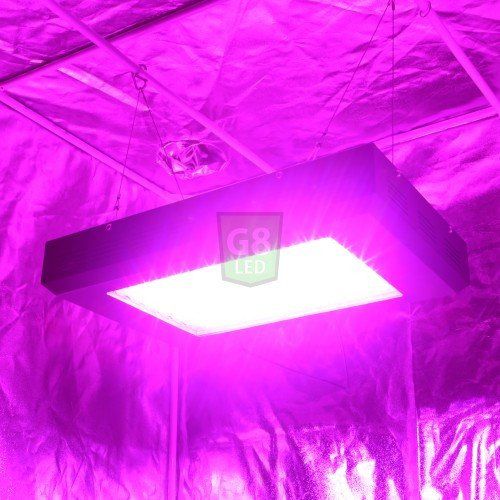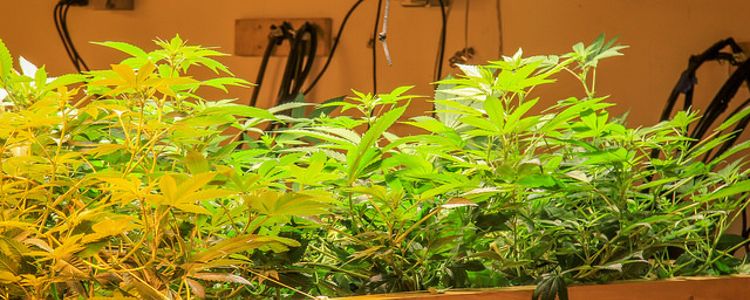LED grow lights are paving a bright pathway for future growers who wish to start large-scale or commercial growing projects.
Many people are growing plants under these unique full spectrum grow lights, which bring with them several benefits.
If you are planning to take up an indoor growing project, it is important that you get a good grip on the science behind these lights, understand exactly why these lights are worth the investment and choose LEDs over other lighting options.

What Do More Lumens Mean?
When it comes to light bulbs, people usually measure the brightness by the amount of luminosity or the lumens. Although lumen is a great metric to measure white light, it does not give meaningful information for LED grow lights.
The PAR value measured in PPFD is what should be looked at first. PPFD measures the amount of photons that hit the leaf surface. Note that while white light gives off high lumens, it also measures lower PPFD since the brightness is suitable for the human eye curve only.
For example, the critical 660nm red color is essential for the flowering phase yet has one of the lowest lumen measurements due to its dull color.
Does the lower lumen value for this red wavelength of light means that it is not a strong component for plant growth? The opposite is true: for example in the case of the 660m red, plants need lower lumens and lights that produce higher PPFD.
What is PAR?
PAR refers to “Photosynthetically Active Radiation,” whose value determines the growing strength of a light.
PAR is expressed as Photosynthetic Photon Flux Density or PPFD. This measures the total light (photons) emitted by a light source.
For plants, the measurement of PPFD tells the number of photons that are hitting the plant surface per second, per meter squared. Just remember that Lux or Lumens measure what the human eye can see, and PPFD/PAR measures the energy that plants absorb.

How do LEDs Affect the Vegetative and Flowering Stages in Plants?
There is a lot of buzz around LED grow lights and how they are great for vegetative and flowering stages of plants. Is this actually true, or false:
The best LED Grow lights like the G8LED grow lights from Dorm Grow give spectacular growing results for both vegetative growth and the flowering phases of plant growth.
For the vegetative growth, you just have to ensure that you follow the best practices, and avoid overwatering plants, or giving them excessive nutrients.
Also, consider other factors like providing your plants with enough light to cover your grow space and be able to penetrate the plant canopy.
For optimal growth, grow with the LED grow light 16-18 hours per day. Often, this cycle creates the right environment like the sunlight in summer days. It’s during this phase that plants actually reap several benefits of the LED.
You can save much more on bills and have superior growing results. Plants will require about 6-8 weeks of this light cycle to move on to the flowering stage.
For larger plants, growers can also consider extending this growth phase to ten weeks.
In nature, most plants start flowering in late summer or fall as the days become shorter and the nights grow longer into the autumn. Growers mimic these seasons by changing the hours of the light cycle from 18 hours per day during vegetative growth to 12 hours per day during flowering.
During the flowering stage, adding more light to the plants will also lead to bigger yields and more flowering. To boost the flowering, you can add a 90-Watt flower booster (G8LED).
As the flowering begins, this will last for about eight to ten weeks. In addition, this is the time when the growing patterns change in the plants. The leaves elongate and progressively grow with fewer blades.
To promote floral formation, potassium and phosphorus uptake also increases. The nutrients will need more potassium and less nitrogen during the flowering stages.
Ones can last for many years to come and help with better yields of plants or crops in cool days.
- How to Use Waxmaid Honey Pen? - April 9, 2024
- How To Choose The Best Electric Dab Rig For Christmas - December 7, 2023
- Maintenance Matters: Keeping Your Glass Water Bong in Pristine Condition - October 9, 2023


